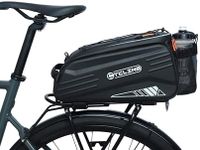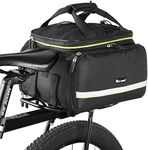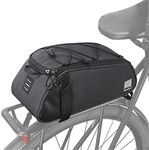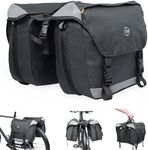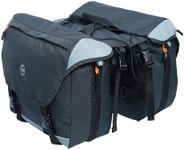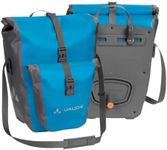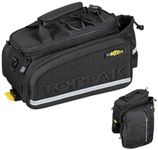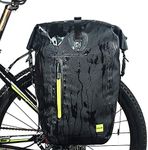Buying Guide for the Best Bike Panniers
Choosing the right bike panniers can greatly enhance your cycling experience, whether you're commuting, touring, or just running errands. Panniers are bags that attach to your bike's rack, providing a convenient way to carry your belongings. The key to selecting the best panniers is to consider your specific needs, such as the type of cycling you do, the amount of gear you need to carry, and the conditions you'll be riding in. By understanding the key specifications of bike panniers, you can make an informed decision that will ensure your rides are comfortable and efficient.CapacityCapacity refers to the amount of space available inside the panniers, usually measured in liters. This is important because it determines how much you can carry. Panniers typically range from small (10-20 liters) for light commuting or day trips, to large (40-60 liters) for touring or carrying groceries. To choose the right capacity, consider what you need to carry regularly. If you're a commuter, a smaller capacity might suffice for a laptop and lunch. For touring, larger panniers are better to accommodate clothing, camping gear, and food.
MaterialThe material of the panniers affects their durability, weight, and water resistance. Common materials include nylon, polyester, and canvas. Nylon and polyester are lightweight and often treated to be water-resistant, making them suitable for most weather conditions. Canvas is heavier but very durable. If you ride in wet conditions frequently, look for panniers with waterproof materials or a rain cover. For everyday use in mild weather, lighter materials may be more convenient.
Attachment SystemThe attachment system is how the panniers secure to your bike's rack. This is crucial for stability and ease of use. Systems range from simple hooks to more complex locking mechanisms. A good attachment system should be easy to use, secure, and compatible with your bike rack. If you frequently remove and attach your panniers, look for a system that allows quick release. For rough terrain, a more secure attachment might be necessary to prevent the panniers from bouncing off.
WaterproofingWaterproofing is the ability of the panniers to keep your belongings dry in wet conditions. This is important if you ride in areas with frequent rain or if you carry items that must stay dry. Some panniers are fully waterproof, while others are water-resistant or come with a rain cover. If you live in a rainy climate or plan to tour in varied weather, waterproof panniers are a wise choice. For dry climates or short commutes, water-resistant options may be sufficient.
Compartments and OrganizationCompartments and organization refer to the internal and external pockets and dividers within the panniers. This is important for keeping your items organized and easily accessible. Some panniers have a single large compartment, while others offer multiple pockets and dividers. If you carry a variety of items, such as electronics, clothing, and food, look for panniers with multiple compartments. For simple loads, a single compartment might be all you need.
Reflective ElementsReflective elements are features that enhance visibility in low-light conditions, such as reflective strips or patches. This is important for safety, especially if you ride at night or in areas with poor lighting. Reflective elements can help make you more visible to drivers. If you often ride in the dark, look for panniers with ample reflective features. For daytime riding, this may be less of a priority, but it's still a useful safety feature.



